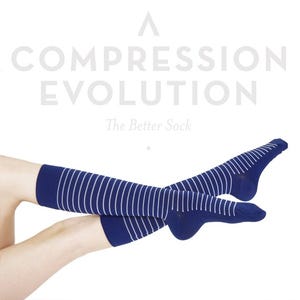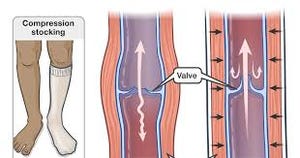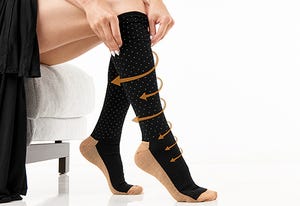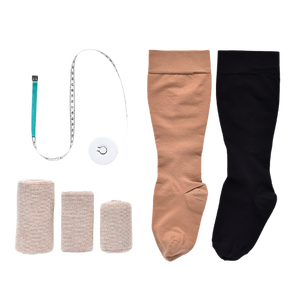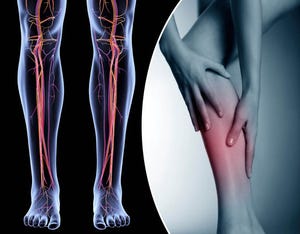How Long Should You Wear Compression Socks? Here's the Answer
If you tend to stay on your feet a lot or sit in one position for extended amounts of time, it can prevent blood in your ankles and legs from flowing properly. Compression socks can help.
Compression socks also provide relief from many medical issues and can be used to prevent some serious conditions.
If you’re wondering about the benefits of wearing them, and how long you should wear compression socks, we’ve got the answers.
The Benefits of Compression Socks
Compression socks form a tight fit on your feet and legs to improve circulation, reduce swelling, and relieve general discomfort. They provide consistent pressure to your legs which stimulates the blood flow from the ankle through the veins in the legs and towards the heart.
Many people use them daily to fight tiredness or aching in their legs — especially if they work in a job that requires them to be on their feet for long stretches. Others use them for specific medical reasons, such as Deep Vein Thrombosis (DVT) which puts them at risk for blood clots forming the deep veins. DVT is a potentially dangerous situation. If a clot forms in a deep vein and winds up blocking blood flow into your lungs, it can result in pulmonary embolism and can be fatal.
If you have nerve damage, peripheral arterial disease, significant leg swelling, skin infection, diabetes, or heart disease, you should have a conversation with your doctor first before wearing compression socks regularly.
People suffering from varicose veins or leg ulcers may also benefit. While compression socks won’t cure these conditions, they can help reduce the pain, swelling, and discomfort.
Many athletes choose to wear compression socks or sleeves and swear by their ability to improve performance. While there’s no scientific evidence that compression socks help athletic performance, some studies suggest it may have a positive impact on recovery times.
How Long Should You Wear Compression Socks
You can wear your compression socks all day long, and you can wear them every day without worries. They’re designed to be worn for long periods. However, you should always remove them before you go to sleep.
When you’re sleeping, you might not notice if a compression sock gets bunched up and could potentially limit your circulation. If it happened during the day, you’d notice it and pull your sock up to smooth it out. If you’re sleeping, you may not notice the discomfort which can lead to medical worries.
You can wear compression socks while reclining or laying down — just stay awake. So, wear them as long as you want during the day but take them off before bedtime. And, if you notice an infection or chafing of the skin while wearing compression socks, talk to your doctor.
Which Type of Compression Sock Is Right for Me?
Compression socks come in different types, including over-the-counter compression socks, graduated compression socks, and those designed specifically for anti-embolisms.
Compression Socks
Uniform compression socks don’t require prescription or doctor’s notes. They provide consistent compression from feet to thigh. These are the type that come to mind first for people thinking about compression socks. You can choose the level of pressure that’s applied and decide on multiple styles, lengths, and fabrics.
Graduated Compression Socks
Graduated compression socks provide the highest level of compression at the ankle and decrease compression towards the top of the leg. This type of compression socks will require a prescription from your doctor and be used typically to treat specific medical conditions or concerns.
Anti-embolism Compression Socks
Anti-embolism compression socks also require a subscription. They’re used by those at increased risk of developing pulmonary embolisms and most frequently prescribed for people that have limited mobility.
If you’re wearing prescription compression socks, follow your doctor’s instructions on how to wear them properly and for what lengths of time. For uniform compression socks, you can wear them during the day as long as you want.
Compression Levels
Compression socks can in different compression levels. Here are the most common:
- 8-15 mmHg Light Support
Provides relief from leg fatigue, aches, and minor swelling. - 15-20 mmHg Medium Support
Helps prevent and provide relief for minor to moderate varicose and spider veins, helps prevent DVT, and are a frequent choice for people traveling long distances. - 30-40 mmHg Firm Support
These are the strongest level of support offered with a prescription. They’re used for severe varicose vein pain relief, treatment of edema and lymphedema, and used in post-surgical treatments. - 40-50 mmHg Extra Firm Support
This level of compression socks requires a doctor’s prescription. They are used to treat extreme cases of leg swelling, varicose veins, chronic vein insufficiency, and DVT.
If you’re not sure which type of sock or which compression level is right for you, the Compression Sock Fit Finder can help.
If you’re not sure which type of sock or which compression level is right for you, the Compression Sock Fit Finder can help.
An Inexpensive Solution
Compression socks are an inexpensive way to relieve aches and pain in your feet, ankles, and legs. They can help prevent discomfort, swelling, and serious medical conditions. If you’re suffering from medical problems, they can also provide relief in some cases.
Sources
https://health.clevelandclinic.org/what-you-should-know-about-compression-socks/
https://www.nhlbi.nih.gov/health-topics/pulmonary-embolism


